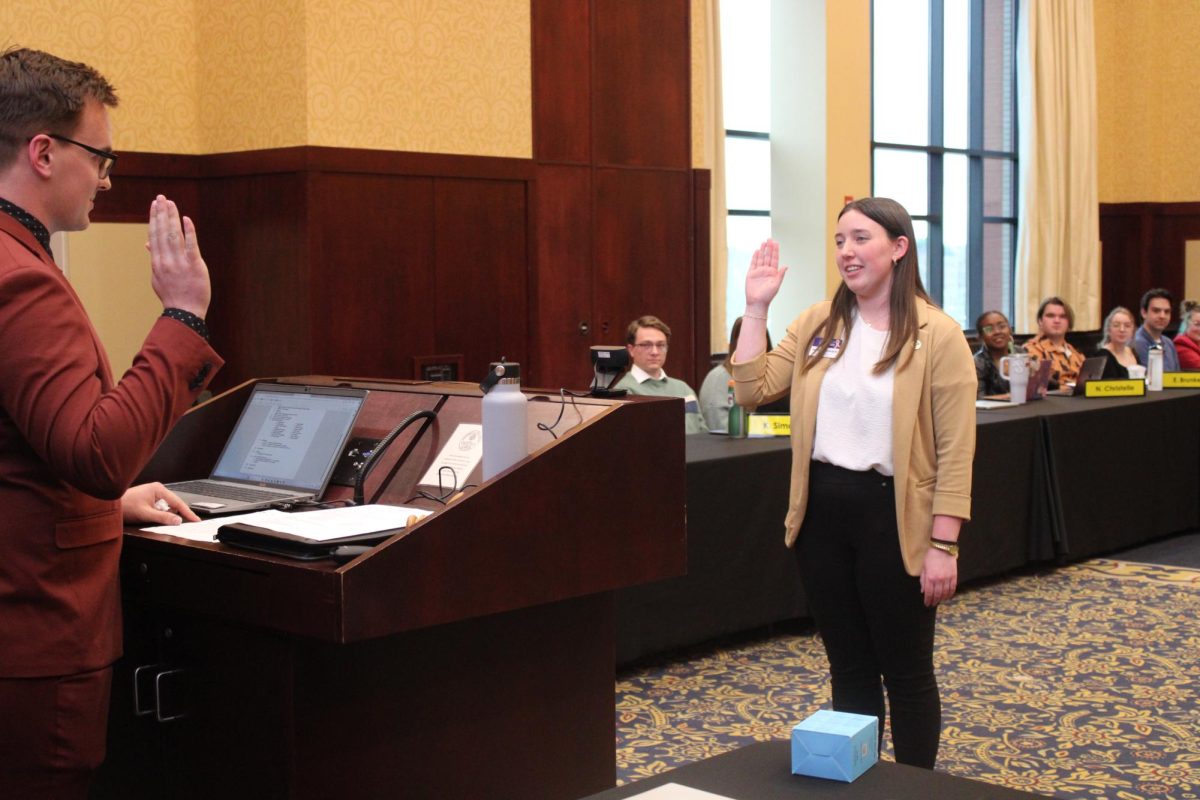Plans to complete a campus bank stabilization project along the Chippewa River are flowing ahead.
University officials and project engineers held a public forum Monday afternoon to discuss their revised plan for stabilizing the southside riverbank. Officials are concerned with the stretch of riverbank along Garfield Avenue from Putnam Park to the footbridge.
Officials say they hope the revised plan will satisfy those people with reservations about the original plan, while still accomplishing repair objectives.
These objectives include preventing deep and shallow surface slides as well as resisting bank and toe erosion.
The Department of Natural Resources now will review the new design to see whether to issue a permit for the stabilization construction. Petitioners to the original design also need to drop their complaints for the plans to go ahead.
Facilities Planning and Management Director Terry Classen said the project’s planners are satisfied with the new size of the riverbank stabilization design.
“We are pleased that this new design, for the majority of the length of this project, does not encroach on the river at all,” Classen said. “Where it does, the encroachment is negligible.”
The revised design would increase the slope of the riverbank to add stability. The current slope has ration of 1 foot to 1 foot. The revised slope would have a 1.5-foot to 1-foot slope.
Floods in 1993 left a 300-foot crack along the bank near McIntyre Library. This prompted concern about the bank’s overall stability and later led to a proposal to increase its stability.
The near $1 million original design included a 1,175-foot stabilization slope stretch from 100 feet upstream from the footbridge and extending to the Putnam parking lot.
A rock slope extending up to 70 feet into the river was also a part of the original plan.
Several people opposed the original plan, including UW-Eau Claire faculty members, neighborhood residents next to lower campus and the DNR.
Monday’s meeting also raised more concerns about the project. Ken Fulgione, Third Ward Neighborhood Association president, said concerns with the project were raised at a recent DNR meeting and asked to be taken into further consideration by the university and Ayres Associates.
Once the DNR approves a rip-rap permit, allowing builders to use “geopier” technology and limestone rock chunks, Classen said, the university can move ahead with plans to stabilize the riverbank. While he was unable to give an exact time that construction would take place along the riverbank, he estimated that the project would begin sometime in the next year.
The slope of the bank is a major area of concern because the current steepness of the slope is a contributing factor to a potential problem. It could lead to a deep or shallow surface failure, according to Ayres Associates.
A deep surface failure could lead to parts of the bank breaking off, creating potential safety hazards on lower campus.
“It is irresponsible to ignore the danger just because it hasn’t occurred just yet,” Classen said. “Our society doesn’t approach threats to public safety that way.”
The new slope would be built with the help of rip-rap protection, Ayres engineer Chris Goodwin said.
The new design also includes plans to construct a paved walkway with a railing along the top of the bank.
The walkway only would be open to students in the summer; it would not be cleared of snow and ice in the winter.
The area also would be re-landscaped with a variety of trees, shrubs and grasses. Current plans include removing all trees and shrubs that are growing along the riverbank.
This could be a potential problem, said Marsha Sivic of Ayres Associates.
Nesting birds could be affected if trees were removed after April 1, she said.
Outside of a potential effect on nesting birds, Sivic said there would be no major influence on either aquatic or land animals as a result of the project.
Paula Kleintjes said she is pleased that the university biology staff was consulted about the landscaping in the new design.
One issue of particular importance, she said, was the inclusion of native species to the redesigned area.
Kleintjes said she believes – while the new design would cause a shock to the area as many older, established plants would be removed – the area would resettle eventually.






